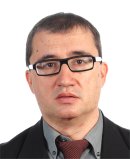|
|
|
Plenary
Lecture
Developing Mathematical
Techniques for Clustering Fuzzy Relational Data

Associate Professor Narcis
Clara
Informatica i Matematica Aplicada
Universitat de Girona
Campus de Montilivi, Ed. PIV Escola Politecnica Superior 17071
Catalonia, Spain
E-mail: narcis.clara@udg.edu
Abstract: Fuzzy clustering methods using objective functions and
solving optimization problems for clustering object data have been very
developed, and some of them with a great success as the fuzzy c-means
families or hybrid clustering models. Even so, we will focus our attention
in fuzzy cluster analysis for relational data which presents a more
algebraic structure because generally deals with concepts as decomposition
of matrices, fuzzy proximity relations or transitive closures.
One of the most applied fuzzy clustering methods for relational data is the
single linkage, which coincides with the transitive closure by the t-norm of
the minimum. This method establishes very suitable mathematical properties
but sometimes presents inappropriate results, keeping all the objects
separated or merging all the objects in only a cluster. Some authors have
surpassed these difficulties, improving the results, using the transitive
closure by another t-norm, but, unfortunately, appearing other inadequate
properties.
We have developed another general procedure in order to try to avoid these
difficulties, integrating in a homogeneous methodology the three main steps
that are compulsory for clustering, namely: to define the similarity between
objects, how to relate the similarity between objects and between clusters,
and, finally, the own clustering method. Many fuzzy similarity indexes are
defined applying crisp properties. Defining the similarity without this
requirement we can also establish the theoretical mathematical bases for
ensure that the corresponding index of similarity defines a proximity
relation, showing that is essential for this purpose the algebraic structure
of the t-norm. Defining the clusters as elements of the same referential
space where belong the data we are able to implement an algorithm, based
only on the fuzzy cardinality of the fuzzy subsets that describe the
objects, which shows promising results.
Brief Biography of the Speaker:
Narcis Clara is Associate Professor of the Department of Computing and
Applied Mathematics of the Higher Polytechnic School at the University of
Girona. He is graduated in Mathematics for the University of Barcelona and
he received the Ph. D. degree from the University of Girona. His research
experience and interests are diverse and essentially cover the theory of
fuzzy connectives, fuzzy additive generators of t-norms, fuzzy similarity
measures, fuzzy clustering and complex systems. He is member of the
Differential Equations, Modelling and Applications research group although
he usually cooperates with other research groups for dealing with
uncertainty in Economics and Management, and Chemical Engineering. He has
participated in several projects mainly for developing new mathematical
techniques for classification and prediction of environmental and economic
variables based on fuzzy systems and neural networks. In collaboration with
the Laboratory of Chemical and Environmental Engineering he has developed
techniques of soft computing for predicting the quality of water at the
effluent of a wastewater treatment plant. He has contributed in many
subsidized university projects; papers published in edited books,
peer-reviewed journals and international conference proceedings, and have
served as a reviewer of International Conferences.
|
|
|